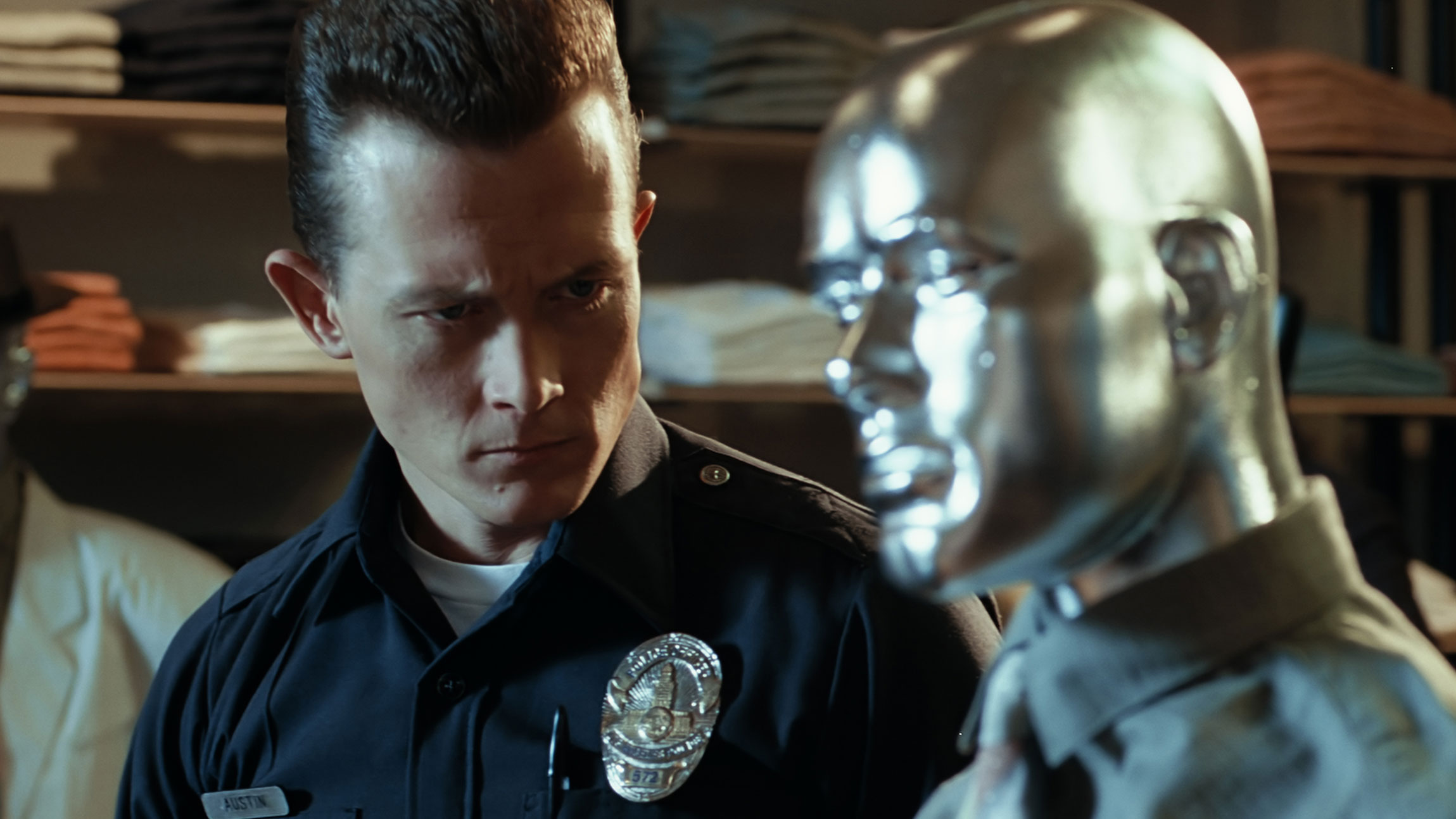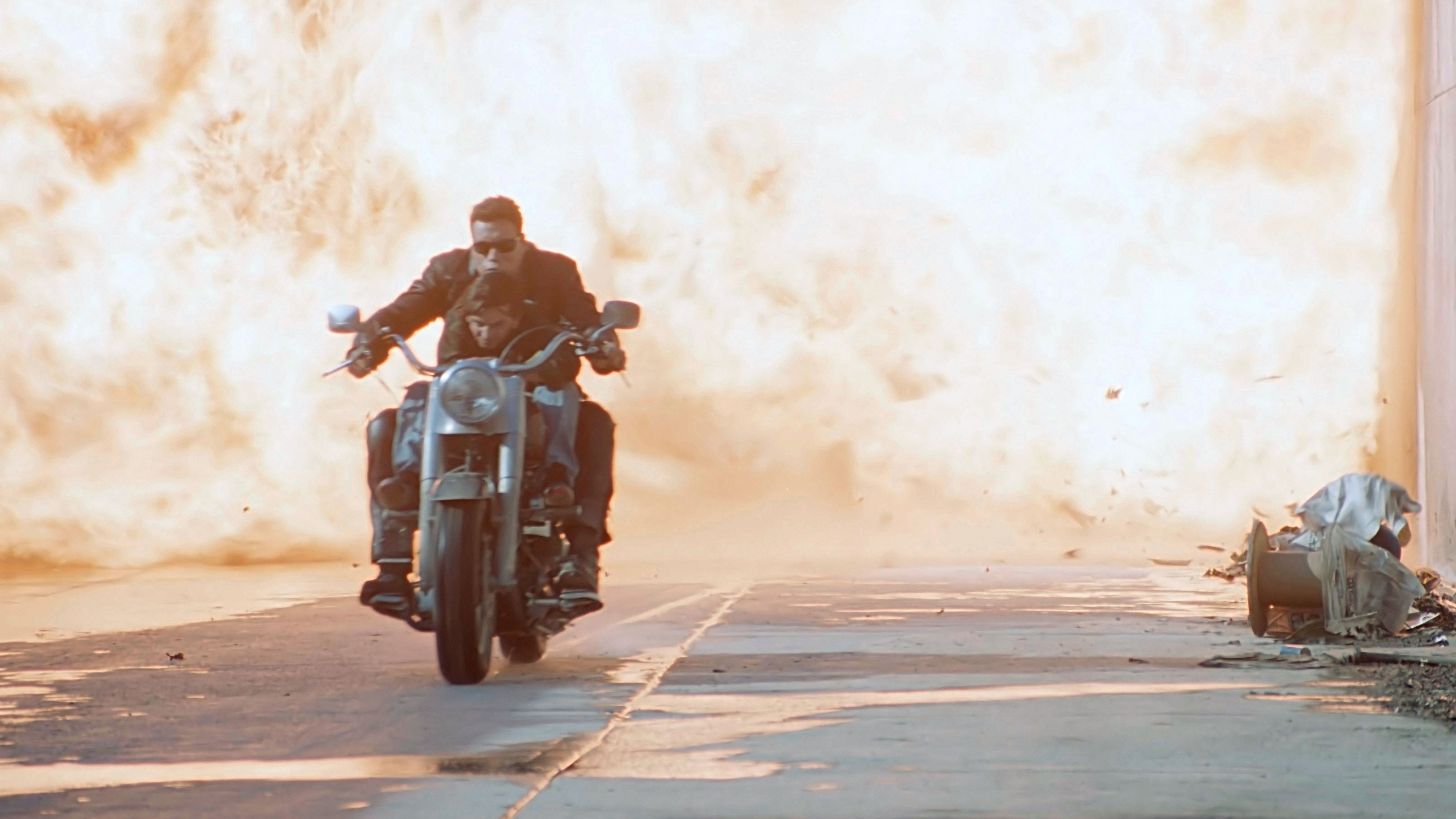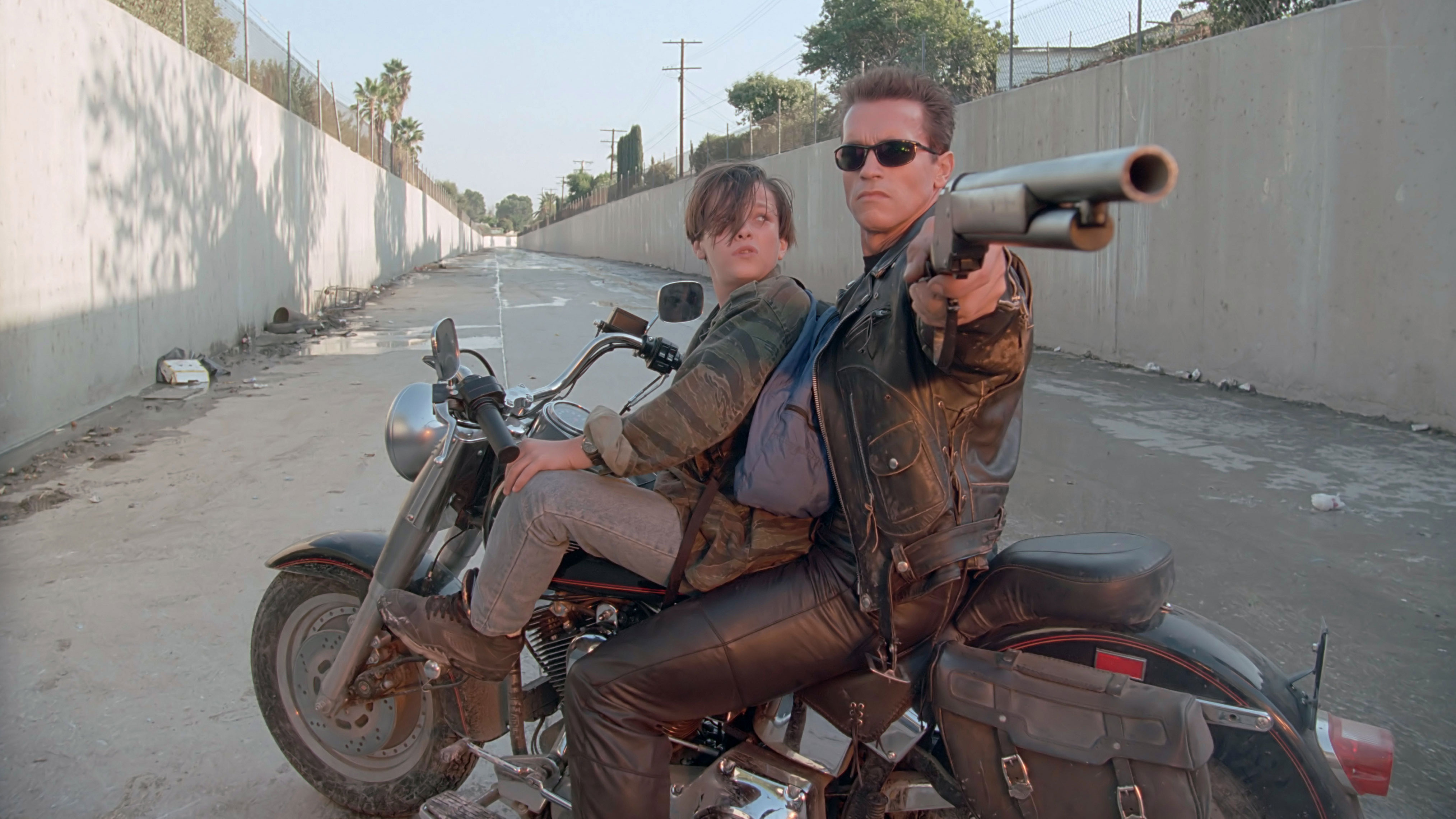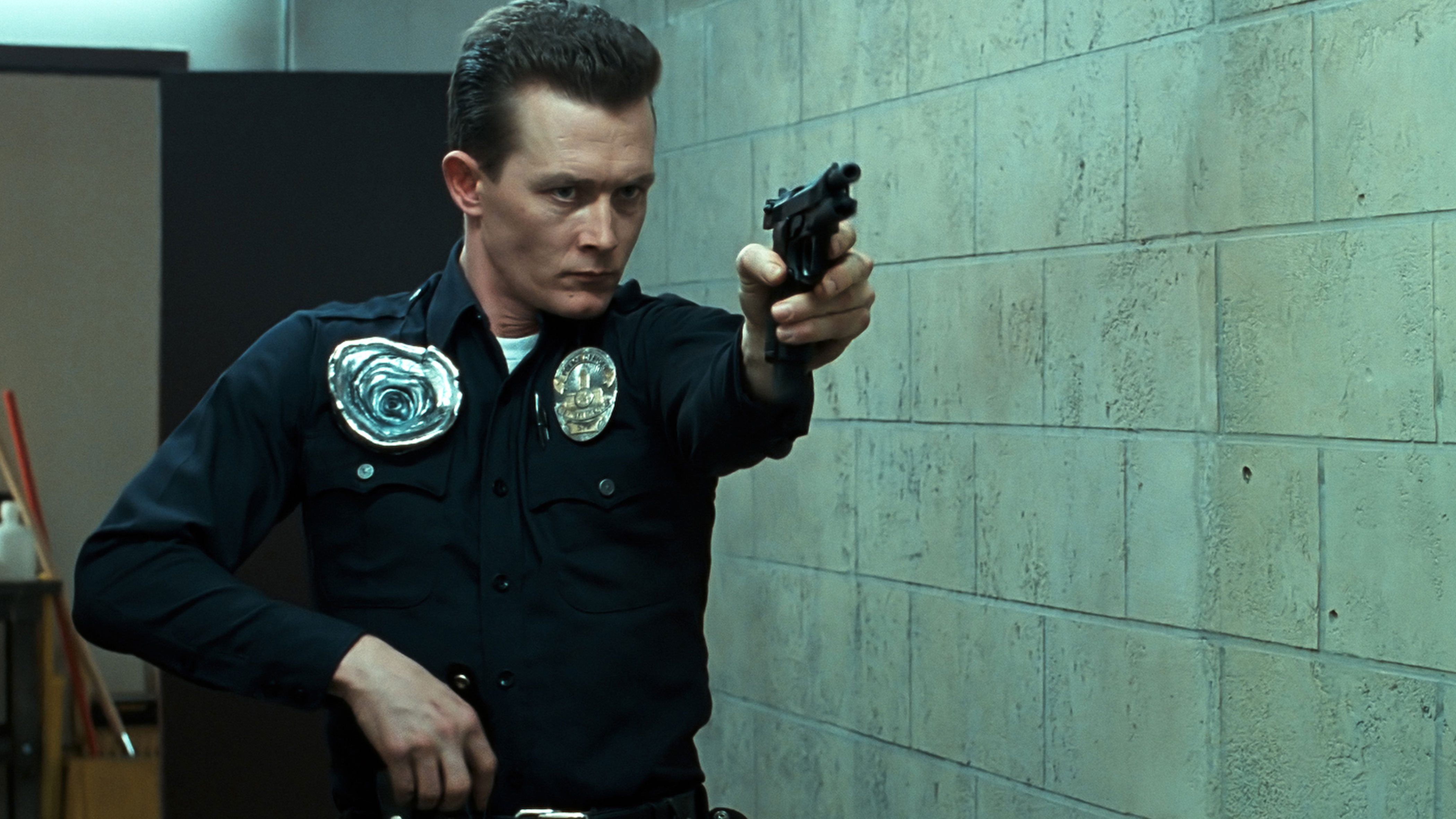How Terminator 2's effects changed film forever - by the legend that made them
From animatronics and models to the groundbreaking graphics of a liquid metal Terminator

Not many people can stake a claim to have been instrumental in changing the face of Hollywood over the years, but iconic special effects man Dennis Muren is one of them, as nine Oscars and a star on the Hollywood Walk of Fame can testify.
From the astounding creatures in George Lucas’ Empire Strikes Back to the monumental leaps taken into CGI across Jurassic Park and Terminator 2, it was Industrial Light & Magic and Dennis Muren to the fore.
Now, in his 70s, Muren remains a key figure in the industry, advising on virtually everything that the famous special effects house does.
"I can’t make a beautiful spaceship model but I can look at it and say ‘that doesn’t look quite right, maybe try this or that"
Muren, speaking to TechRadar to mark the launch of Terminator 2 Judgement Day on 4K UHD on December 4th, admitted that the transition from animatronics and models to the groundbreaking graphics that saw actor Robert Patrick play a liquid metal Terminator sent from the Future was a daunting one.
“I was following what we were doing with the CGI group and I did the Young Sherlock Holmes show a few years before just to see what it was like but I never really understood it. So I took a year off work and got a massive textbook, about 1,800 pages long, and I sat in the local coffee shop here in California and I read it,” explains Muren.

“I didn’t understand enough to be able to do it but I realised there was no magic to it - no voodoo involved, it was just a load of guys who were really good at mathematics making these images with algorithms and what I thought was missing was a direction for it.
“I felt comfortable enough with making things look real to go back and do some tests on my own. I got a Mac II and just played with that. There was no way to learn that when you were at work. I was doing regular shows [movies] where I’d used CGI a couple of times on The Abyss and Young Sherlock Holmes but never really had the chance to study it from the ground up so that’s why I got away from work to do it.
Sign up for breaking news, reviews, opinion, top tech deals, and more.
“I’m still that way today, I can’t make a beautiful spaceship model but I can look at it and say ‘that doesn’t look quite right, maybe try this or that’.”
“I thought Star Wars was a big change, that and Empire [Strikes Back], but the biggest ones have to be T2 and Jurassic Park"
Muren’s work on some of the most well-known special effects in movies gives him a unique insight into the pivotal changes in his industry over the past 40 years. It is Terminator 2 and Jurassic Park, both films from the early '90s, that represent a dramatic shift.
“I thought Star Wars was a big change, that and Empire [Strikes Back], but the biggest ones have to be T2 and Jurassic Park - right in that period there,” he says.
“There was just nothing like it. You’ve never seen anything like it. It was liberating because we were no longer stuck with having to work with tools and gravity and paint. It was all as good as you can imagine it.”
Terminator 2 rewrote the rule-book on what was possible in computer graphics, and the effects hold up remarkably well for a film that came out in 1991. Robert Patrick’s T-1000 has so many memorable moments that James Cameron dared to dream up, and the CGI team and Muren managed to make work with limited technology and their ability to mix old and new techniques with great acting and direction.
“It’s everything together,” explains Muren. “If one part of it doesn’t quite look right Jim [Cameron] could cut to another angle or another technology so we can get through that because all this stuff just barely worked.
"We’re not making stage plays, it’s just got to make it to the cut and that means you can do stuff you’ve never seen before.”

The rules of gravity
Muren is a firm believer that films that use CGI should also pay attention to the rules of nature, like abiding the rules of gravity, something he knows is fast becoming a rare attitude.
“It’s part of why something doesn't look right and that’s part of what comes of being able to do anything,” he says.
“Sometimes the director wants something to move faster or the animator wants it to move faster from a story point of view. You quickly get to the point where nothing could ever move that fast if it was real, but people get excited about it and start doing it.
“Then you put it in a movie and it looks like it’s defying gravity and it’s not looking like something would in the real world and when the audience looks at that it’s clear as can be that there is something wrong.
“So it’s important to work within rules I think. But that’s going away so quickly. Take superhero movies where they don’t mind breaking the rules, having people move at incredible speeds or climbing up a wall.
“It seems a lot of people these days don’t buy that [you need rules] but it can keep it from looking real and if the goal is to look real then you have to be really careful.”

It’s this old-school sensibility in using new ideas that Muren believes has been lost in modern CGI at times, and he is pleased to see people turning back to models and animatronics and using CGI more sparingly.
“I think having both models and CGI is really important and not only so the actors can look at and feel it, but so the cameramen can see it, and the CG artist can see it and even better if it can move a little bit.
“The problem came when the animatronics was trying to do too much that was when it became frustrating to the crews and the director and the producers. It was a fine line to say ‘we’re able to do this’ or ‘no we can’t’.
“Now we know what the CGI can do and we know what the animatronics can do and to get [the animatronics] to get up and move around or something means we’d move to CGI.
“At the beginning that really wasn’t going on and that turned a lot of producers away from it because CGI can do anything but it’s always hard to make it look real for a whole movie.”
What’s truly remarkable is that Muren’s work on T2 stands the test of time, not something many films, even in the past 10 years, can boast.
Terminator 2 Judgment Day is released on 4k UHD (incl: Blu-Ray), 3D BLU-RAY (incl: Blu-Ray), BLU-RAY, DVD & DIGITAL DOWNLOAD on December 4th.
- You can also check out 10 surprising ways famous film special effects were made
- Behind the scenes on The Hobbit

Patrick Goss is the ex-Editor in Chief of TechRadar. Patrick was a passionate and experienced journalist, and he has been lucky enough to work on some of the finest online properties on the planet, building audiences everywhere and establishing himself at the forefront of digital content. After a long stint as the boss at TechRadar, Patrick has now moved on to a role with Apple, where he is the Managing Editor for the App Store in the UK.